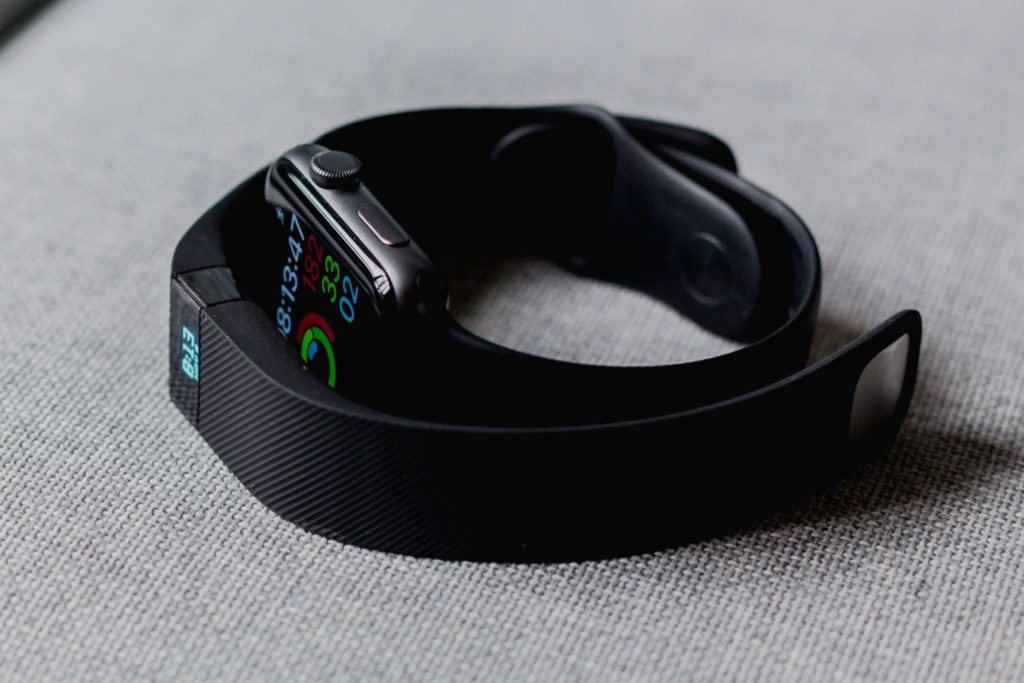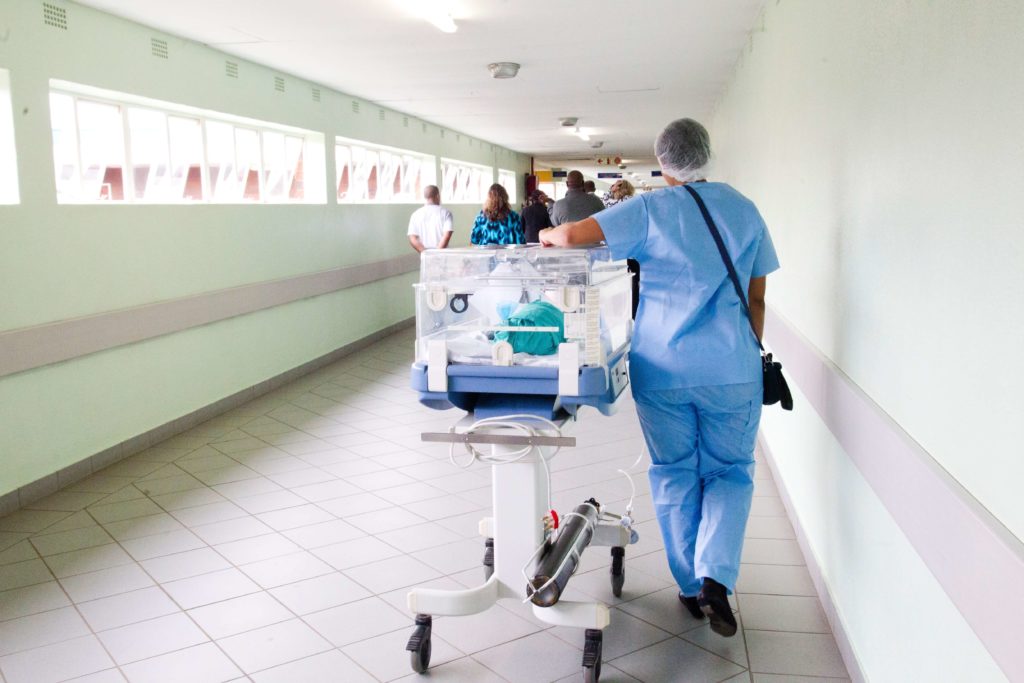Staying fit and healthy has become a chief concern for our society. Many people strive to be in the best physical shape possible by taking on sports and exercise, keep their minds tidy by meditating, and maintain a diet of their choice. Meanwhile, healthcare systems around the world face the need to evolve, adopt new technologies, and tackle long-standing challenges.
Internet of Things (IoT) is the enabling technology of many health and wellness related activities and processes. It is invisible, cost-effective, solves ongoing challenges and opens doors for new creative opportunities, and has a short learning curve. Most importantly, it allows everyone to stay healthy and helps medical experts save lives.
As promising as it already sounds, the promise of IoT in healthcare is broader still — the technology will help the industry perform a meaningful evolution. From ultimate personalization with DNA testing, to sophisticated sleep technology, to smarter houses for Parkinson’s disease patients, let’s explore how connected devices will change the healthcare industry.
Connected Wellness Devices
Evolution of Device Ecosystems
Staying fit and healthy is the main driver of modern lifestyles. Here, smart IoT devices for wellness have become our helpers. Connected gadgets provide and gather important information, motivate us, and even serve as our trainers, among other things.
Today, the vast majority of people who exercise and closely monitor their health have at least a smart watch or bracelet alongside their smartphones and fitness apps, which all work together in one ecosystem. Although they have long become essential to modern exercise routines, as technologies continue to evolve, the role these devices play will only keep growing.

The foundation for these developments is already in place. The Apple and Fitbit IoT ecosystems are already so vast that can use advanced algorithms to provide their users with spot-on insights and workout recommendations.
As the latest Apple Watch model has an ECG feature, we can also expect future IoT devices would perform checks that are currently possible only in medical facilities, gathering even more information and providing even better recommendations.
Wellness Devices will Reach Ultimate Personalization
Existing IoT wellness devices gather many types of data and provide deeply personalized recommendations to users, Still, the highest level of personalization will be enabled by more sophisticated means that rely heavily on IoT technology.
For example, Skulpt developed a scanning device that allows users to analyse fat-to-muscle ratio and muscle health individually. The information is sent to the Skulpt app, as it performs an in-depth analysis and then offers users individual recommendations for safe and efficient workouts.
Still, reaching the highest level of personalization can only be enabled by solutions based on DNA testing. With properly developed AI-driven algorithms, these connected health and wellness devices will provide truly individual workout and diet recommendations.
FitnessGenes is one of the existing examples. The company offers a three-step DNA analysis of vascular function, sleep cycles, saturated fat sensibilities, energy production, and other. After, the FitnessGenes app offers the user a genetically tailored nutrition plan and workout advice. As users continue to demand increasingly personalised products and services, health and wellness devices driven by DNA testing will be widely popular in the coming years.
The New Life of Group Fitness
Small but highly effective, IoT sensors will gain more traction in fitness as well, especially group-focused exercises. Placed on each participant, the battery-powered wireless sensors will gather information and stream it to a TV screen or a trainer’s mobile device, in real-time. This way, the participants could follow the progress of others, while trainers can better cater to each client on-the-go.
Speaking of data sharing, people love sharing their sports achievements with others, as well as connect with fellow fitness enthusiasts. So, apps like Strava will remain popular in the coming years, while also giving way to more curious solutions. For example, xMed allows users to diagnose health issues in two ways. First, it has AI-driven algorithms. Second, it serves us a social media network where users can ask fellow health and wellness enthusiasts for advice — or connect with medical experts. Smart watches and bracelets are in the equation, of course (learn more here).

Better Sleep
Sleep deprivation has emerged as a widespread modern malaise. Scientists, public figures, and popular media outlets ring red alert on our bedtime habits and the low numbers of our shut-eye hours. Arianna Huffington went as far as to branding sleep deprivation “the new smoking” in a Fast Company article, as the condition causes a wide range of mental and physical health issues. Sound-based products providing ambient sounds do not seem to suffice anymore.
Except a sleep robot, wellness medical devices powered by IoT technology have emerged as the solution. Products on this market include sleep trackers, nighttime wearables, and smart pillows.
This wellness connected devices include smart mattresses. Eight Sleep, a New York-based technology company, offers a comfortable mattress with IoT sensors, which gather data about fifteen sleep and health factors, and delivers it to the Eight Sleep app. The application also enables users to control the temperature of both sides of the bed. The latest version has an additional device called the Pod that can dynamically change the mattress temperature according to the gathered data about personal sleep temperature preferences for both sides of the bed. The solution can also be controlled with smart home systems like Alexa.
Connected Devices in Healthcare
Remote Wellness Monitoring Devices
Today, hospitals and other medical institutions continue to struggle with high patient loads, as nurses face long extra hours. The problem will not go away anytime soon, at the very least. On top of that, finding funding remains an unsolved issue for many medical institutions.
Here, IoT comes forward as the most fitting solution, and one of the major drivers of the industry’s technological evolution. Connected health devices help solve healthcare’s critical issues in an effective, patient-friendly, and cost-effective way, as well as introduce many other benefits and solutions.
For instance, the NHS (National Health Service) of the UK is currently at the second phase of testing Technology Integrated Health Management (TIHM). The program reduces the number of hospital and home care admissions for dementia patients with a system of wellness monitoring devices, allowing them to comfortably stay at home for longer periods of time. The NHS installs the sensors in a patient’s place of stay, allowing clinicians to monitor their health remotely 24/7. The solution also involves artificial intelligence-driven algorithms, and can alert medical experts in a number of occasions.

Pfizer and IBM went further with the concept to simplify the treatment of Parkinson’s disease. The medical condition requires continuous assessment and medication regimen adjustments based on a patient’s movements, cognitive responses, and a myriad of other factors. During their study, the companies placed IoT sensors on the majority of objects to monitor the symptoms and relay the data to clinicians, which in turn can make the needed adjustments to the medication routine, as well as stay informed about the patient’s condition around the clock.
The solution also leverages mobile devices and advanced machine learning capabilities. Pfizer and IBM strive to help people with Parkinson’s disease lead their lifestyles without being confined to a hospital while also gather data and streamline the patient management process.
As taking care of patients with serious long-standing diseases is problematic in the face of overcrowded and busy hospitals, solutions with connected health devices can save medical institutions costs and significantly reduce (or even eliminate) the nurses’ extra hours. Due to their invisible and user-friendly nature, connected health devices have a very short learning curve. More so, they allow hospitals to provide patients with the best type of comfort — the comfort of their homes.

Smart Medication Management
Ensuring vaccines are kept at the right temperature at all times is critical. All the more so if they are dispatched to hard-to-reach regions with deadly diseases and a high demand for the cure.
To address this issue, Nexleaf Analytics created ColdTrace — a remote temperature monitoring system for vaccine refrigerators in rural healthcare organizations. An IoT sensor is installed into a refrigerator unit to monitor temperature and grid power, and the connected health devices system sends updates and alerts to the monitoring personnel.
As for more mundane situations, AdhereTech created a Smart Pill Bottle to ensure a person does not fall out of their medication routine. Currently available only in the U.S., each bottle connects to the company’s HIPAA compliant system to choose the most fitting treatment for every user. The solution also connects to the pharmacy system, notifying pharmacists about people who need their support in real-time. As a result, one uses the Smart Pill Bottle like a normal bottle.
What is important, the “invisibility” factor IoT healthcare solutions will continue playing a pivotal part in connected devices in healthcare. The less the patient has to learn about and deal with device, the easier and less stressful the treatment.

Equipment Management
Hospitals are big and busy, and even a bulky and expensive piece of medical equipment might get lost in a corridor, room, or one of the numerous wards. In the following years, more and more hospitals and medical organizations will turn to IoT technology to quickly locate the needed equipment.
Going back to the NHS, the organization’s Scottish wing started a pilot project with IoT-driven hospital beds at Caithness General Hospital. The beds are equipped with sensors that gather data for maintenance records and pinpoint beds’ whereabouts.
In turn, G.E.’s AutoBed platform can track nurse proximity. Installed at New York’s Mt. Sinai Hospital for testing, AutoBed also helps track the beds quickly. The numbers clearly indicate such solutions will gain traction in the future. G.E.’s platform had reduced emergency room (ER) wait times by several hours for fifty percent of the hospital’s ER patients.
Still, some hospitals are just too vast and demand more complex solutions. For example, one company needed an equipment-monitoring IoT ecosystem involving a wide range of connected devices: an RFID wand, RFID scanner, mobile app, and RFID tag printer. Together with a web portal, the devices help find and manage an extensive fleet of medical devices in large hospitals.


